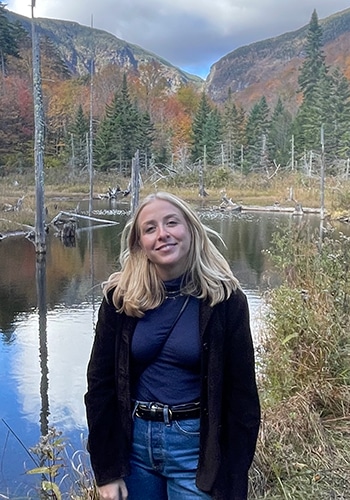By: Charlotte Bieri JD/MELP’25
Before law school, I had a very different idea of the type of lawyer I was going to be. I imagined a fulfilling career ahead of me that was full of crafting legal arguments, standing in a courtroom, advocating for clients, and ultimately “winning.” I used to believe the best lawyers had all the answers. I thought lawyers were expected to lead the fight. I believed a good lawyer was someone who would fight relentlessly on behalf of their clients—someone who held the knowledge, in some instances, the power, and the responsibility to “fix” things. However, having now practiced community and movement lawyering as a student attorney for three semesters in the Environmental Justice Clinic (EJC), I have deeply questioned that perception that I previously held.

Traditional legal practice often prioritizes individual cases and singular voices. Community and movement lawyering shift that focus.1 A community lawyer’s values acknowledge that legal battles do not happen in a vacuum—they are intertwined with social movements, systemic inequities, and power imbalances.2 As a young professional working to develop skills that align with these values, I have had to learn how to be an active listener, how to have empathy driven-communication, and how to continuously practice cultural humility.
I have also had to confront the reality that sometimes the most important work a lawyer does is not even legal at all. The law is just one tool in a much larger fight, and many of the most meaningful and necessary moments happen when you are listening, showing up, and holding space for others.3 Sometimes, the biggest contribution a lawyer can make is helping community members navigate or understand a complicated government process, connecting them with journalists to bring attention to their fight, or simply being a trusted person they can turn to when they feel unheard. That can mean monitoring local concerns on community forums and social media, keeping up with agency decision-making and public meetings, explaining complex environmental policies in plain language, helping draft public comments, and ensuring advocacy efforts reflect the priorities of the community, not just legal strategies.
There’s another recurring tension in legal advocacy. When a community is dealing with an environmental crisis, for example, the legal solution might focus on immediate relief—stopping pollution, securing compensation, enforcing regulations, etc. While a traditional lawyer’s mindset often focuses on securing a legal victory and moving on, a community lawyer remains engaged long after the case is won or lost. That is because to a community and movement lawyer, their role is not just about legal advocacy—it is about standing with the community, making space for their voices, and supporting their long-term efforts.
This understanding feels especially urgent in today’s political climate. As federal policies shift, legal protections can be eroded overnight, and building power on a local scale matters more than ever. Whether it is pushing for city-level environmental regulations, fighting for stronger tenant protections, or mobilizing around tribal sovereignty, community and movement lawyering is one way to ensure that legal advocacy remains in the hands of the people and not just the institutions that govern them. As I prepare to enter the legal profession, I hold onto these values. No matter what area of law I practice, there will always be ways to support movements and serve communities.
The most important lesson I have learned in law school is not about statutes or court procedures. It is about relationships. It is about trust. And it is about recognizing that being a lawyer is not just about the law. Sometimes, the most valuable thing a lawyer can do is to listen, support, and stand up for what is right. That is the kind of lawyer I want to be.
Charlotte Bieri JD/MELP’25 is a 3L at Vermont Law and Graduate School, graduating with both a juris doctor and a master’s degree in environmental law and policy. She spent three semesters in the Environmental Justice Clinic, working alongside impacted communities to advocate for equitable and lasting solutions to environmental harms. Committed to public interest work and community-centered advocacy, Charlotte will continue her legal journey after graduation as a judicial clerk in Ketchikan, Alaska.
- Betty Hung, Letter to a Young Public Interest Attorney, 1 L.A. Pub. Int. L.J. 319 (2009). ↩︎
- Nancy L. Cook, Looking for Justice on a Two-Way Street, 20 Wash. U. J. L. & Pol’y 169 (2006). ↩︎
- Betty Hung, Movement Lawyering As Rebellious Lawyering: Advocating With Humility, Love and Courage, 23 Clinical Law Review 663, 664 (2017) [hereinafter Hung]. ↩︎